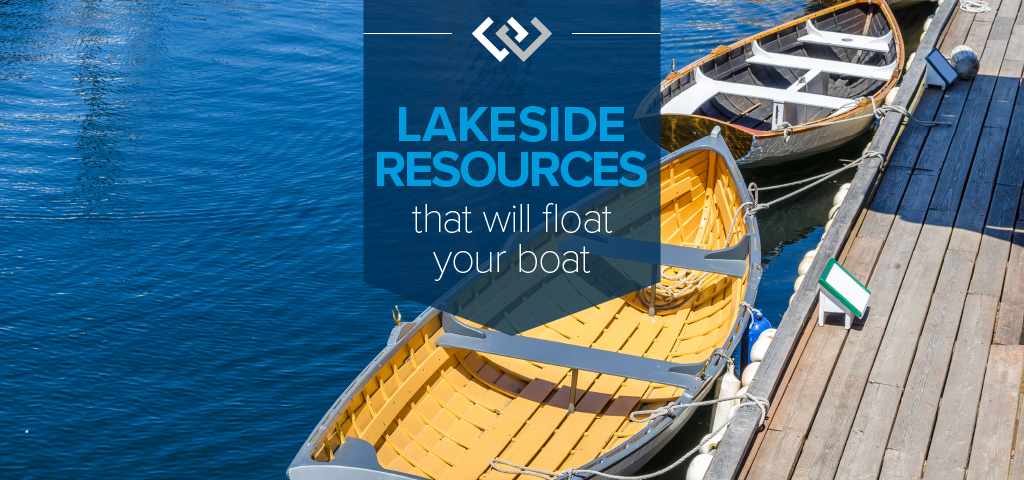Evaluating Waterfront Property Values

While supply and demand clearly play a role in establishing the value of a waterfront property, several unique elements overshadow the typical supply divided by demand equation.
The first one is rarity. Examples of this include:
- point properties—waterfront at the tip of one of our few natural points—with more expansive water frontage and street privacy
- parcels with extended front footage—homes that have far more waterfront feet than the norm (i.e. 180 front feet versus a more typical 60-80 feet)
- iconic properties—homes that have significant owners or histories
As with all real estate, location is a critical factor in assessing waterfront value. Any given property will have a value adjustment based on where it sits on the map and how the surrounding properties influence it. You can’t establish value without first determining the range of values for that location. When there are few comparable recent sales in a given location we often separate land value from the house value, compare them separately to other sold properties and then determine their combined value.
Waterfront access and amenities, which affect how you can use the waterfront, are an important consideration. This includes topography, dock, water depth and exclusivity. Higher value is generally given to:
- no or low bank waterfront with walk out access
- expansive views unhindered by natural obstacles or man-made structures
- large dock structures in good condition and/or boat houses that can no longer be built
- locations with higher water quality and/or deep-water moorage/access
A waterfront home’s setting also plays an essential role in its value. Homes most in demand include those with:
- an estate-like feel and additional privacy
- comfortable road access and parking
- sunny exposure
- larger (useable) lot square footage
- preferential positioning of the home and windows to capture views from most rooms
- remodel/rebuild-slated homes that have good construction access
Last, but not least, is the structure itself. While many waterfront buyers chose to make substantial changes to put their signature on their home, many still prefer turnkey homes with desirable floor plans and amenities. Because desired amenities change over time and the typical owner/buyer can usually afford to create what they want, waterfront homes tend to see the wrecking ball far earlier than non-waterfront properties.
In summing it all up, waterfront value is affected by many different criteria with supply and demand often determining how quickly a home will transact. The fewer potential buyers for a given price point, the longer the market time will typically be. That said, many waterfront buyers spend years waiting for the right combination of personally-desired features and amenities to come to market—making the demand less predictable than in other real estate arenas. This explains why you might see an expensive, rare waterfront property transact very quickly while similar homes sit on the market for years. Another old saying might sum up waterfront value best, “Beauty (and value) is in the eye of the beholder.”
Valuing waterfront is far more complicated than it looks. Following a process to arrive at value lessens the risk of overlooking key elements. Utilizing a knowledgeable waterfront appraiser or local real estate broker is a savvy strategy when valuing any waterfront parcel or shared waterfront parcel.
Find a Home | Sell Your Home | Property Research | Neighborhoods | Market Reports | Our Team
We earn the trust and loyalty of our brokers and clients by doing real estate exceptionally well. The leader in our market, we deliver client-focused service in an authentic, collaborative and transparent manner and with the unmatched knowledge and expertise that comes from decades of experience.
© Copyright 2020 Windermere Mercer Island.
How to Determine the Value of Shared Waterfront

The concept of shared waterfront incorporates many different waterfront-sharing situations. Establishing the value of the share isn’t as simple as dividing the overall value of the waterfront parcel by the number of shares…although that’s a good start.
The term “shared waterfront” has been used to describe everything from a private parcel shared by two owners to one shared by an entire private community of hundreds of owners. The value, as you can imagine, is much different in each of these situations.
Valuing the Waterfront Parcel: Establishing the value of the shared parcel itself is the first step in determining the value of a share. Like assessing the value of private waterfront, its rarity, location, waterfront access, maintenance cost, and amenities like docks and available moorage all play a role in determining value when compared to like parcels.
-
- Rarity: Waterfront shared by only a few parcels is much harder to find than a private community beach shared by many parcels. Rarer still is one with a dock and deeded moorage.
-
- Location: Value will be influenced by where it sits on the map and the properties surrounding it.
-
- Waterfront Access: Being able to easily walk to the shared waterfront adds to its usability and value. If driving is necessary to access it, is there readily available parking? Can you easily launch watercraft? If not, where is the nearest launch access? What limitations on access exist?
-
- Maintenance: The cost of maintaining the parcel of land and any docks, bulkhead, and access trails or roads is a factor in valuing a share. What is the present condition of these features? What are future anticipated expenses? How are these expenses shared or assessed?
-
- Docks and Moorage: A dock adds considerable value to a waterfront parcel by expanding its use and functionality. Temporary, rotating and deeded moorage each add value to both the shared parcel itself and to the individual parcels based on how they benefit.
Valuing Each Individual Share: Once you have determined the value of the waterfront parcel, looking at the number of shares is the next step in determining each share’s value. But, not all shares are created equal. Some will have better access than others.
Often, limited by dock size, some parcels will have deeded moorage while others won’t. And for those with deeded moorage, some will be premium spaces while others are less than ideal. Some shares utilize an annual lottery or rotation system for assigning moorage.
Weighing the value of the individual share’s amenities and benefits is essential to understanding how the share contributes to the value of each individual property. This establishes each share’s percentage of value in the waterfront parcel.
Valuing shared waterfront is far more complicated than it looks. Following a process to arrive at value lessens the risk of overlooking key elements. Utilizing a knowledgeable waterfront appraiser or local real estate broker is a savvy strategy when valuing any waterfront parcel or shared waterfront parcel.
Find a Home | Sell Your Home | Property Research | Neighborhoods | Market Reports | Our Team
We earn the trust and loyalty of our brokers and clients by doing real estate exceptionally well. The leader in our market, we deliver client-focused service in an authentic, collaborative and transparent manner and with the unmatched knowledge and expertise that comes from decades of experience.
© Copyright 2020 Windermere Mercer Island.
Lakeside Resources That Will Float Your Boat

Shorelines are heavily regulated in King County and, love it or hate it, the tight guidelines help keep our Puget Sound lakes in good order. King County’s Lake Stewardship Program has produced several fact sheets on lakeside regulations. If you’re wondering what you can plant and still be in good graces with the powers that be, check out their Lake Friendly Landscape and Garden fact sheet. Find info about aquatic plant management, boating restrictions, and even how to wash your boat and dock in a way that keeps phosphorus out of our lakes.
Another great resource is King County’s Lake Services and Information page with a wealth of information on everything from lake history and water quality to lake maps and recreation info. One can look up individual lakes throughout the county and even sign up for lake alerts.
Many recreational boaters in Washington are required by law to complete a boating safety course and carry a Washington State Boater Education Card. Even if you are not required to carry the card, we encourage you to take an education course. Whether you cruise, sail, kayak, fish, or do yoga on a stand-up paddle board, you need to know the laws and basics of boating safety. The Washington State Boater Education Card is valid for your lifetime and meets requirements for recreational boating in Canada and many other states.
Contemplating investing in a waterfront property or planning to renovate or rebuild your current waterfront home or dock? The Washington State Department of Ecology offers resources on their web page. Because all shoreline permits are processed by the local governments, it is imperative to know who to call for your jurisdiction. Find these resources and links all in one place on our website.
There’s no doubt that waterfront has many intricacies and nuances that require one’s full engagement. We’re here to help put resources and tools at your fingertips! Contact one of our local real estate brokers for more information or with questions about waterfront.
Find a Home | Sell Your Home | Property Research | Neighborhoods | Market Reports | Our Team
We earn the trust and loyalty of our brokers and clients by doing real estate exceptionally well. The leader in our market, we deliver client-focused service in an authentic, collaborative and transparent manner and with the unmatched knowledge and expertise that comes from decades of experience.
© Copyright 2019 Windermere Mercer Island.

 Facebook
Facebook
 Twitter
Twitter
 Pinterest
Pinterest
 Copy Link
Copy Link

